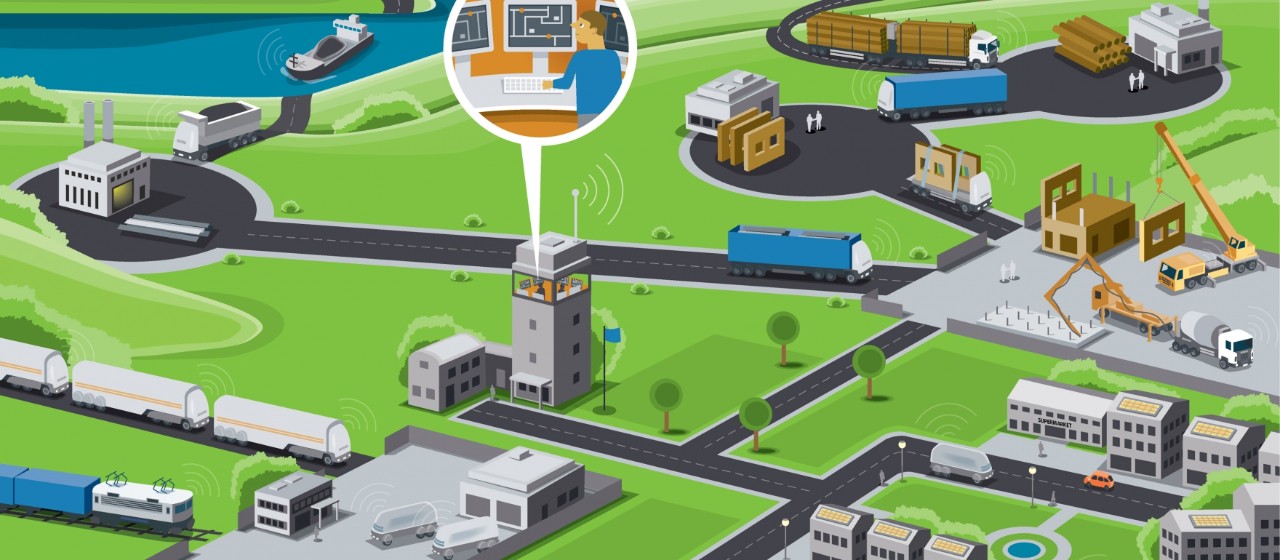
A connected future
15 JUNE 2017
Scania’s vision for the future of the transport industry includes an integrated system where self-driving and electric vehicles are connected to a control tower, according to Claes Erixon, Head of Research & Development.
Scania’s vision is to drive the shift towards a sustainable transport system, creating a world of mobility that is better for society, better for the environment and more profitable for businesses.
Using real-time data from connected vehicles
That’s why the company is investing significant resources into developing technologies of the future, be it taking advantage of the enormous possibilities of real-time data from connected vehicles, or conducting research into vehicles that can use electrified, alternative fuel or self-driving technologies.
An important guideline for the company’s research is creating scenarios for the future that answer the question: what will the transport system look like in 2030 or 2040?
“The key word in our future scenario is efficiency,” says Claes Erixon, Head of Scania Research & Development. “We are convinced that efficiency and profitability go hand-in-hand with concerns for the environment and the development of the transport industry.”
No single solution will solve all challenges
Scania takes a broad approach to the future, acknowledging that there is no single solution that will solve all the challenges.
“We want to address concrete customer needs instead of convincing them of a particular solution,” says Claes Erixon. “The main point in our future scenario isn’t about questions such as whether vehicles will be automated but rather that the system as a whole is integrated for better overall efficiency.”
Learn more about Scania’s solutions
Click the figures in the map to read more about industries and applications where self-driving and electric vehicles will be available in a near future.
- Mines are controlled and strictly-defined areas, sometimes located in environments that are hazardous to humans. This will be the first area where self-driving vehicles are used. “These controlled environments with fairly simple flows are ideal for obtaining better efficiency through using automated vehicles,” says Claes Erixon.
- For the forestry industry the advantages of using connectivity to optimise flows are increasing. Thanks to an optimised system, timber trucks arrive at the right time to load the logs and drive them to a processing plant, where they are fed into the production process when optimal.
The future vision includes a ‘control tower’ that is connected to the vehicles and has an overview of the flow in the logistics system. The control tower might also have a role to play in increasing the average filling rate of each transport, an area where there is tremendous potential for increasing the overall efficiency. “In strictly-defined areas such as mines we think that the control tower will be manned by physical operators, but when it comes to long-haul transport we think that we will see various types of cloud-based optimisation services.” - Truck platoons, or convoys, on larger roads and highways is a solution for increasing efficiency and safety in the logistics system, as well as for reducing the impact on the environment. Thanks to automated or semi-automated support systems the vehicles can drive very close to each other, taking advantage of decreased air drag for lower fuel consumption, though Claes Erixon says that the technology is a few years away from becoming commonplace. “I think it will take several years before we will see convoys with fully automated vehicles on highways and driving between terminals,” explains Erixon.
- Distribution trucks with hybrid electric powertrains enable goods to be delivered quietly in cities during off-peak hours, leading to increased total resource efficiency and road use. Tests are underway in several cities and there is already a lot of interest from municipalities in this initiative, so we could see it expand significantly in due course.
- For public transport in cities, autonomous bus solutions will start to appear. However, due to the enormous complexity of unpredictable city traffic, self-driving buses will probably be restricted to Bus Rapid Transit systems or routes with dedicated bus lanes for quite some time. Future city bus systems will also be more flexible so they can form platoons when they really need the capacity. “Another possibility is to develop flexible and electrified vehicles that can transport commuters during the daytime and goods during night-time,” says Erixon.